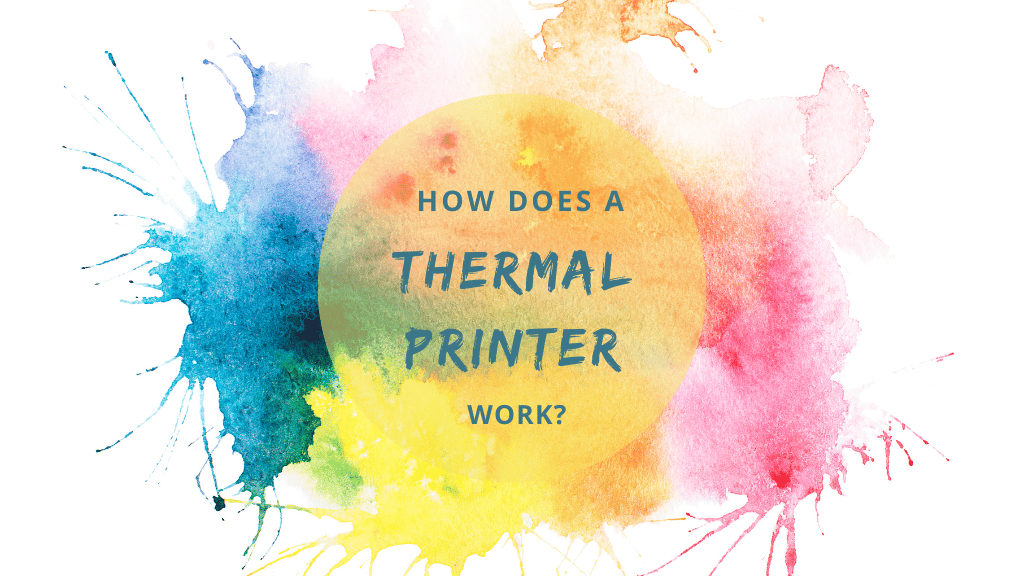Thermal printers are crucial for many businesses. However, are you aware of how thermal printers are able to produce large quantities of durable labels, signs, and barcodes?
In contrast to inkjet and dot matrix printers, thermal printers produce images using a heated printhead.
This method produces images with superior print quality and increased durability.
There are two types of thermal printers: thermal transfer and direct thermal.
Each utilizes a thermal printer that provides heat to the marking surface.
WHY OPT FOR THERMAL PRINTER?
If you need to print out barcodes, particularly on labels, tags, or wristbands with a lengthy shelf life or that are exposed to sunshine, dampness, or severe circumstances, you're probably utilizing or considering employing thermal printers.
Thermal-based printing is also an excellent choice if you're interested in:
- Media flexibility
- Low-maintenance, durable printers
- Application modularity
Alternative technologies, such as impact printers, are more susceptible to failure in industrial and dynamic settings.
Frequently, they lack the print quality necessary to generate clear, consistently scannable barcodes and are not designed for adhesive label media.
(Impact printers operate by striking an ink ribbon with a metal or plastic head. Dot matrix, daisywheel, and ball printers are examples).
HOW DOES A THERMAL PRINTER WORK?

Image credit: Starmicronics.com
There are two kinds of thermal printers that you can choose from:
1. THERMAL TRANSFER PRINTING
Thermal transfer printers utilize a heated printhead that melts ink onto the media by applying heat to a ribbon. The ink is absorbed, embedding the picture into the media.
This approach offers superior picture quality and longevity compared to other on-demand printing technologies.
Paper, polyester, and polypropylene are some of the media types that thermal transfer printers can accept in addition to direct thermal printers.
2. DIRECT THERMAL PRINTING
Without requiring a ribbon, toner, or ink, direct thermal printers produce images directly on the printed medium.
This approach utilizes chemically treated, heat-sensitive material that turns black when passed beneath a thermal printer.
Consequently, this medium is more susceptible to light, heat, and abrasion, making labels and tags less durable. Images can deteriorate over time, and media can darken when overexposed to heat, light, or other agents.
WHAT IS THE PURPOSE OF A THERMAL PRINTER?
Thermal Printers offer a wide range of applications in a variety of industries:
- Transport and Logistical Planning
- Cross-docking and inventory
- Picking and packaging
- Receiving and shipping
- Inventory administration
- Evidence of delivery
- Rental car return
- Manufacturing
- Construction in progress
- Conformity labeling
- Parts management
- Equipment maintenance
- Traceability
- Quality control
- Healthcare
- Positive patient identification
- Laboratory/pharmacy administration
- Asset management
- Accurate specimen labeling
THINGS TO CONSIDER BEFORE BUYING A THERMAL PRINTER

Image credit: Brothermobilesolutions.com
Print volume and speed
Comparing the two thermal printing techniques, direct thermal printing is faster and requires less maintenance effort. Simply replacing the label stock and maintaining the heat element is sufficient for optimal production.
Image quality causes thermal transfer printing to be slightly more precise and time-consuming.
It is also the user's responsibility to know which ink ribbon works best with the specified print media. This could be a deal-breaker for small firms with a high turnover rate that demand a fast printer.
Compatibility
Small businesses that prioritize the speed and effectiveness of their copies may favor direct thermal printers.
This printing technology is ideally suited for label stickers and receipts that do not require a lengthy shelf life.
If, on the other hand, your firm relies largely on the quality of labels such as barcodes and uses a variety of packaging materials, thermal transfer printers should be your first choice.
Printing method
Before commencing on your road of decision, you must first determine the print method most frequently employed by enterprises of all sizes.
What does it all mean, with so many options on the market such as inkjet printing, direct thermal printing, and thermal transfer printing?
A conventional inkjet printer operates by spraying or injecting ink droplets from the ink cartridge onto the desired surface.
Since their invention in the 1950s, inkjet printers have changed little throughout the years.
In contrast, thermal printers produced decades later have seen substantial advancements, resulting in two distinct thermal printing methods.
To achieve the desired result, direct thermal printing employs a heating element in the printer to imprint heat-activated label paper.
If you've ever received a receipt, it was likely printed on a direct thermal printer.
As this approach does not require ink or printer ribbons, the benefits of direct thermal printing are mostly monetary.
Label stock is the only component that requires frequent maintenance.
As its name suggests, thermal transfer printing utilizes heat to chemically adhere the ink to a label.
The term "label" is used because thermal transfer printers are more versatile in that they can employ a wide range of media types, including sticker labels, cardboard packaging, and even padded envelopes.
All of this comes at a price, as thermal transfer printer ribbons must be replaced frequently.
